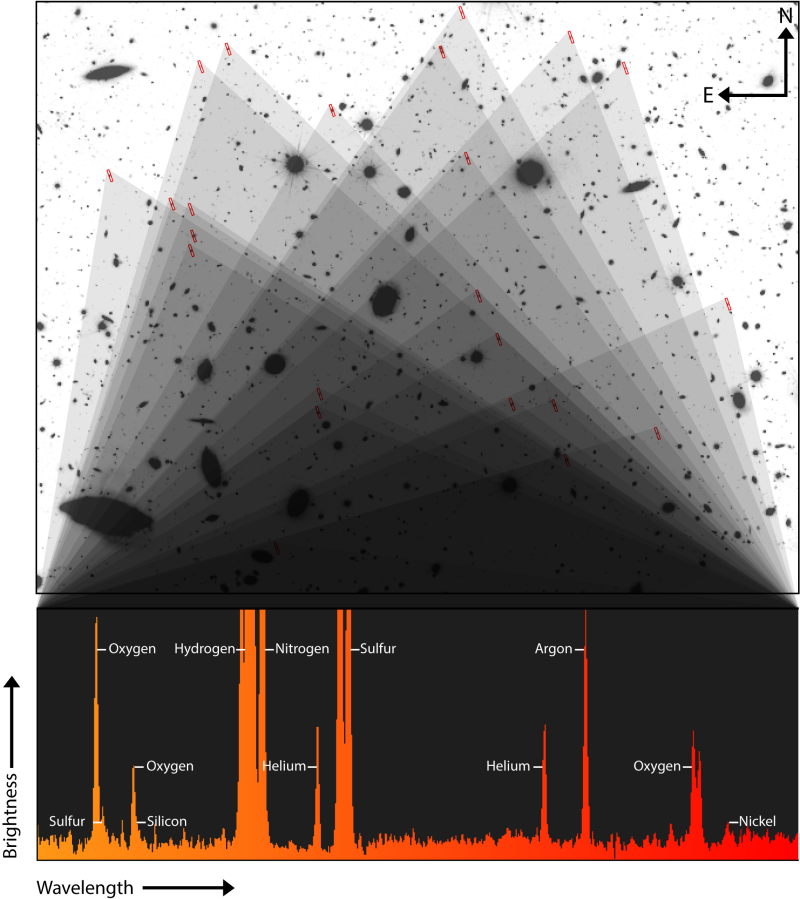Light from 23 distant galaxies, identified with red rectangles in the Hubble Space Telescope image at the top, were combined to capture incredibly faint emission from eight different elements, which are labelled in the JWST spectrum at the bottom. Although scientists regularly find these elements on Earth, astronomers rarely, if ever, observe many of them in distant galaxies.
CIERA Professor Allison Strom co-leads CECILIA (Chemical Evolution Constrained using Ionized Lines in Interstellar Aurorae) Survey, a program that uses NASA’s JWST to study the chemistry of distant galaxies. Strom likens a galaxy’s spectra to its “chemical DNA.” By examining this DNA during a galaxy’s “teenage” years, researchers can better understand how it grew and how it will evolve into a more mature galaxy. A galaxy’s spectrum can reveal its key elements, such as oxygen and sulfur, which provide a window into what a galaxy was previously doing and what it might do in the future.
“These teenage years are really important because that’s when the most growth happens,” Strom said. “By studying this, we can begin exploring the physics that caused the Milky Way to look like the Milky Way — and why it might look different from its neighboring galaxies.”
The ultra-deep spectrum revealed eight distinct elements: Hydrogen, helium, nitrogen, oxygen, silicon, sulfur, argon and nickel. All elements that are heavier than hydrogen and helium form inside stars. So, the presence of certain elements provides information about star formation throughout a galaxy’s evolution.
Read the full CIERA news story here.

Credit: Aaron M. Geller, Northwestern, CIERA + IT-RCDS
- Science

